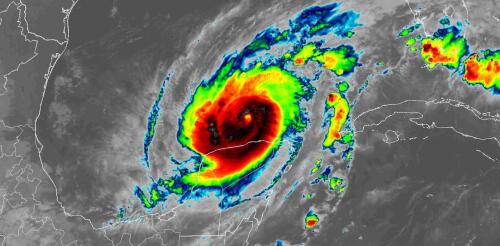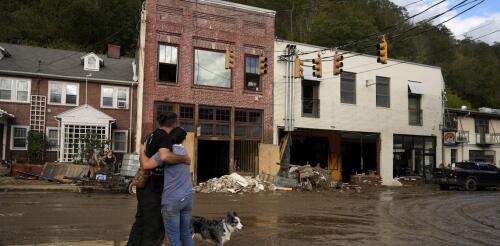Atmospheric science
Hurricane Milton became one of the most rapidly intensifying storms on record as it went from barely hurricane strength to a dangerous Category 5 storm in less than a day on a path across the Gulf of Mexico toward Florida. With sustained winds that reached 180 mph on Oct. 7, 2024, and very low pressure, it also became one of the strongest Atlantic storms. Milton’s winds dipped to Category 4 strength early on Oct. 8, but forecasters warned that it would still be an extremely dangerous hurricane at landfall. Less than two weeks after Hurricane Helene’s devastating impact, this kind of storm was the last thing Florida wanted to see. Hurricane Milton was expected to make landfall as a major hurricane on Oct. 9 and had already prompted widespread evacuations. Hurricane Milton’s projected storm track, as of midday Oct. 7, 2024, as it grew into a major hurricane (M). Storm tracks are projections, and Milton’s path co...
Some hurricanes are remembered for their wind damage or rainfall. Others for their coastal flooding. Hurricane Helene was a stew of all of that and more. Its near-record-breaking size, storm surge, winds and rainfall together turned Helene into an almost unimaginable disaster that stretched more than 500 miles inland from the Florida coast. At least 230 people died across Florida, Georgia, South Carolina, North Carolina, Tennessee and Virginia as Helene flooded towns, destroyed roads and bridges and swept away homes. In Florida, Helene’s storm surge caused damage along hundreds of miles of coast. As residents there cleaned up debris, another dangerous hurricane was headed their way. Some of the same areas hit hard by Helene on Sept. 26, 2024 – including Tampa Bay and Cedar Key – were forecast to see more flooding and an even higher storm surge in Tampa Bay from Hurricane Milton, expected to make landfall as early as Oct. 9. The majority of Helene’s vic...
The year 2022 will be remembered across the U.S. for its devastating flooding and storms – and also for its extreme heat waves and droughts. The nation saw 18 disasters that caused more than US$1 billion in damage each, well above the average. The year started and ended with widespread severe winter storms from Texas to Maine, affecting tens of million of people and causing significant damages. Then, March set the record for the most reported tornadoes in the month – 233. During a period of five weeks over the summer, five 1,000-year rainfall events occurred in St. Louis, eastern Kentucky, southern Illinois, California’s Death Valley and Dallas, causing devastating and sometimes deadly flash floods. Severe flooding in Mississippi knocked out Jackson’s troubled water supply for weeks. A historic flood in Montana, brought on by heavy rain and melting snow, forced large areas of Yellowstone National Park to be evacuated. In the fall, hurricanes Ian and Fio...
As a hurricane intensifies, hurricane hunters are in the sky doing something almost unimaginable: flying through the center of the storm. With each pass, the scientists aboard these planes take measurements that satellites can’t and send them to forecasters at the National Hurricane Center. Jason Dunion, a University of Miami meteorologist, has led hurricane field programs for the National Oceanic and Atmospheric Administration. He described the technology the team uses to gauge hurricane behavior in real time and the experience aboard a P-3 Orion as it plunges through the eyewall of a hurricane. What happens aboard a hurricane hunter when you fly into a storm? Basically, we’re take a flying laboratory into the heart of the hurricane, all the way up to Category 5s. While we’re flying, we’re crunching data and sending it to forecasters and climate modelers. In the P-3s, we routinely cut through the middle of the storm, right into the eye. Picture an X p...
The summer of 2022 started with a historic flood in Montana, brought on by heavy rain and melting snow, that tore up roads and caused large areas of Yellowstone National Park to be evacuated. It ended with a record-breaking heat wave in California and much of the West that pushed the power grid to the breaking point, causing blackouts, followed by a tropical storm that set rainfall records in southern California. A typhoon flooded coastal Alaska, and a hurricane hit Puerto Rico with more than 30 inches of rain. In between, wildfires raged through California, Arizona and New Mexico on the background of a megadrought in Southwestern U.S. that has been more severe than anything the region has experienced in at least 1,200 years. Near Albuquerque, New Mexico, a five-mile stretch of the Rio Grande ran dry for the first time in 40 years. Persistent heat waves lingered over many parts of the country, setting temperature records. At the same time, during a period of five weeks between...




